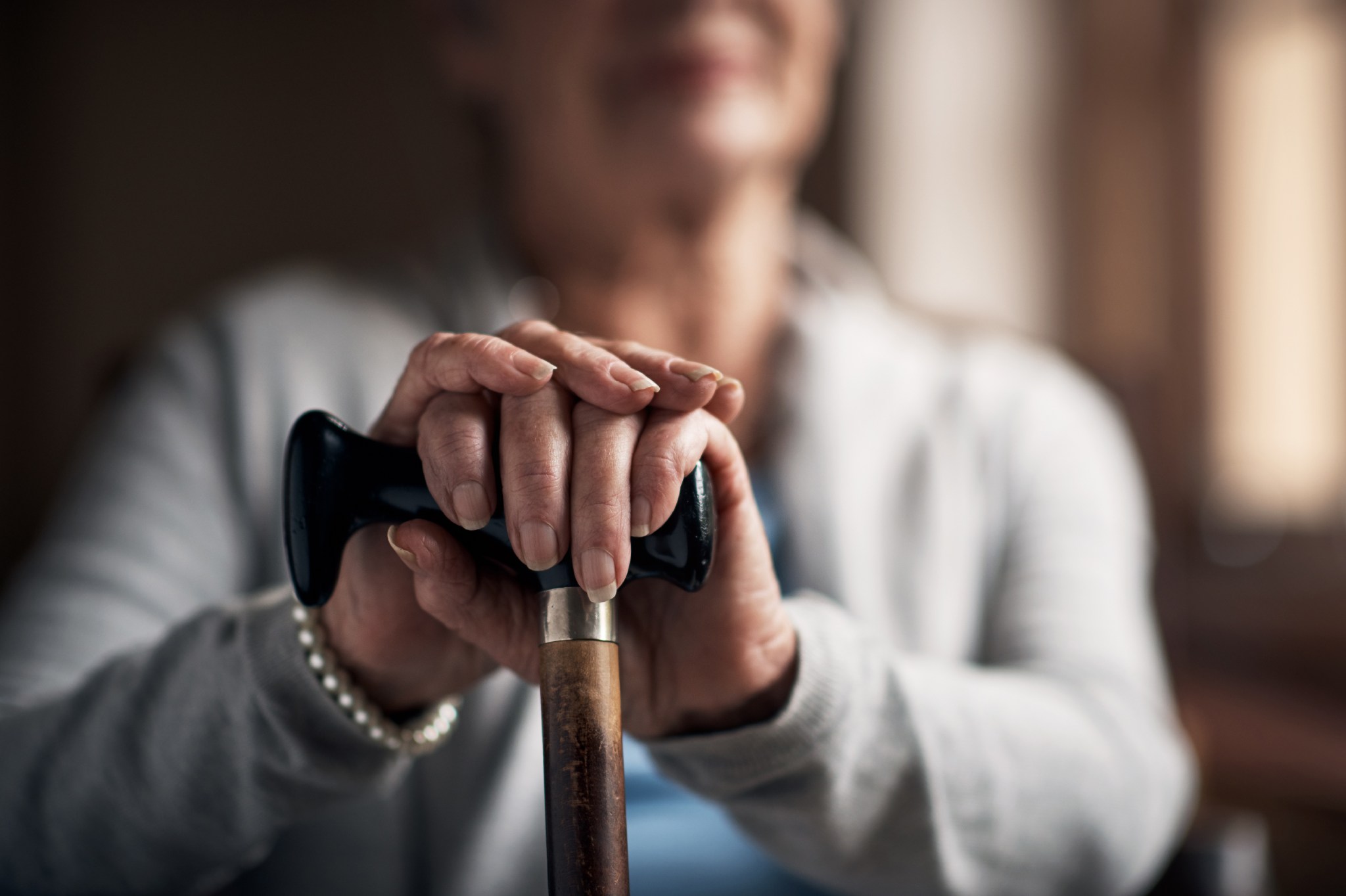
If it’s getting a little harder for you to open a jar these days, it’s not all in your head. Losing muscle strength is a natural sign of aging. However, researchers out of Edith Cowan University in Australia have found that declining grip strength may be a sign of late-life dementia in older women.
The study, which was published last month in the Journal of Cachexia, Sarcopenia and Muscle, looked at the relationship between muscle function and dementia. Using data from the Perth Longitudinal Study of Ageing in Women, researchers examined more than 1,000 women with an average age of 75.
Researchers collaborated with the University of Western Australia to measure the women’s grip strength and conduct timed up-and-go tests, also known as TUG tests, which determined how long it took for them to stand up from a chair, walk three meters, turn around, and sit back down.
After five years, researchers repeated the tests to measure performance. Over the course of 15 years, researchers found that nearly 17% of women in the study experienced either a dementia-related hospitalization or death.
The link between grip strength and cognitive decline
Those with weaker grip strength were considered “more than twice as likely to have a late-life dementia event than the strongest individuals,” according to the study. Similarly, those with slower TUG tests were found to be more than twice as likely to experience dementia than the quickest participants.
The team determined that lower grip strength and slower TUG tests were “significant risk factors for presenting with dementia, independent of genetic risk and lifestyle factors such as smoking, alcohol intake and physical activity levels.”
“Possibly due to a range of underlying similarities, grip strength may also present as a surrogate measure of cardiovascular disease, inflammation and frailty, which are known risk factors for dementia,” Marc Sim, one of the lead researchers, said in a press release about the study.
As such, he recommended grip strength and TUG tests as inexpensive screening tools that should be added to clinical practice in an effort to identify dementia risk in patients earlier.
“Incorporating muscle function tests as part of dementia screening could be useful to identify high-risk individuals, who might then benefit from primary prevention programs aimed at preventing the onset of the condition such as a healthy diet and a physically active lifestyle,” Sim said. “The exciting findings were that decline in these measures was associated with substantially higher risk, suggesting that if we can halt this decline, we may be able to prevent late-life dementias. However, further research is needed in this area.”
Why grip strength is important
Typically, grip strength starts to decline around age 50, though some research suggests it can even start in our late forties. Essentially, grip strength is an indicator of the replacement of muscle tissue with fat tissue, explains Dr. Ardeshir Hashmi, section chief of Cleveland Clinic’s Center for Geriatric Medicine, who was not part of the study.
“Grip strength is one indicator that is easy to measure,” he says. “Essentially what it’s measuring is the replacement of muscle tissue with fat tissue. As that happens, our grip strength goes down. It’s the same reason our walking speed goes down [as we age] as well.”
Grip strength as an indicator of cognitive health
It comes as no surprise to anyone that physical health is also tied to cognitive health, with people active for at least 10 minutes each day being mentally sharper than people who are less active. This is due, in large part, to two theories, according to Hashmi. One theory is that the cardiovascular health of people who are active is better than those who aren't.
“We know physical activity is good for the heart. It makes the heart stronger, lowers blood pressure, and produces better cardiac output,” he says. “So the heart is able to pump blood more easily, and if the heart is in good condition, then blood supply to the brain is going to be optimized as well.”
The second theory is related to oxygenation of the brain.
“When we exercise, we take in more oxygen into the lungs. Oxygenation is important for all tissues, but the brain tissue is incredibly sensitive to this in a positive way,” says Hashmi. “So the more oxygen you get, the sharper you are. The opposite is also true, though: If you deprive the brain of oxygen and blood supply, then the brain tissue not only shrinks, but there are areas that die off, especially in the memory area.”
Ways to improve your grip strength (and support your brain health)
To help combat this cognitive decline and improve your grip strength, Hashmi recommends the following exercises:
- Combine light weights with aerobic exercise for at least 10 minutes a day. “It’s about the combination of both,” says Hashmi. “And it doesn’t even have to be free weights, you can use resistance bands. But it has to be something you’re able to do every day. It’s not about the intensity of it or how heavy these things are, but the regularity of it.”
- Squeeze an (adequately resistant) stress ball. The right consistency can typically be found in a racquetball or squash ball. A tennis ball may do more damage than good, and if the ball is too squishy you won’t reap the benefits of the exercise. While there’s no defined number of sets you have to do, Hashmi encourages people to repeat this exercise daily or twice a day if possible.
“Even things you may not directly link with physical frailty, such as memory impairment or cognitive impairment, actually worsen in people who are frail,” says Hashmi. “If we look at the frailty spectrum all the way from robust to the severely frail, we see it maps out exactly with the progression of dementia,” says Hashmi. “So it can go from mild cognitive or mild memory impairment to moderate to severe dementia—those two things tend to run parallel.”







